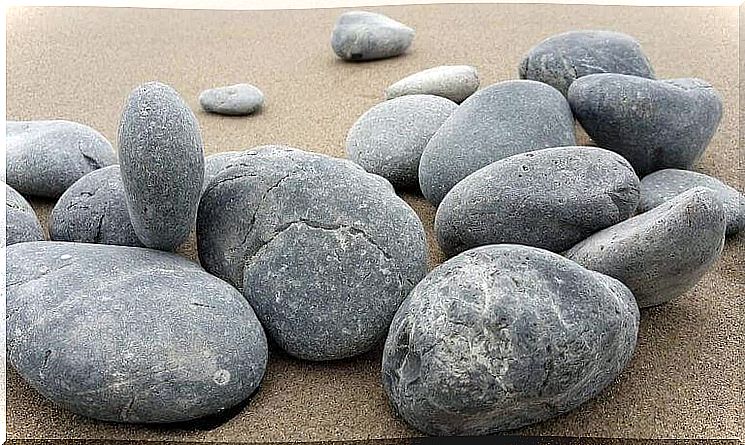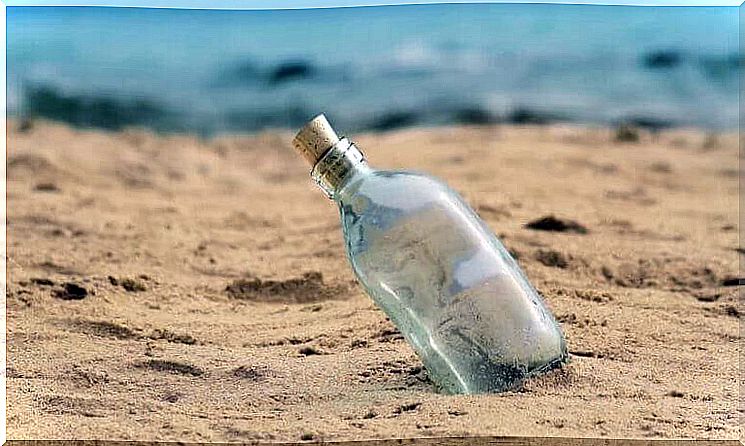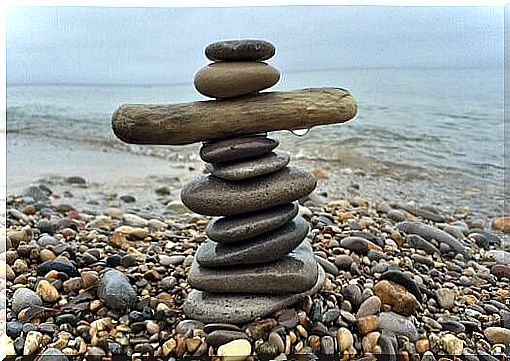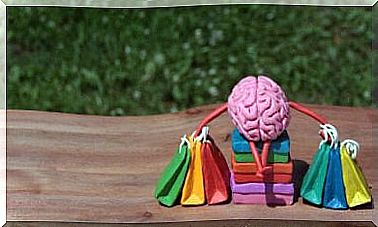The Story Of The Stones In The Glass: How Can We Better Deal With Worries?

A professor at an adult education institute wanted to teach his students a lesson. Many of them stated that they did not have enough time to study because they had to work in addition to the lectures and, last but not least, had personal problems . Some simply lacked the money, others were married, had children and did not feel up to the additional responsibilities. So the professor decided to tell them the story of the stones in the glass.
Some students didn’t even want to hear this story. For her it was, in a way, a waste of time. They would rather get ahead in the subject than follow the story of the stones in the glass. After all, they were adults and they didn’t feel it necessary for anyone to teach them how to live.
Despite the reluctance of the students, and perhaps for this very reason, the professor insisted on teaching them the lesson of the day. So he took an empty glass vessel and placed it on the table. Then he took a couple of large stones from under the desk and placed them next to the glass. He then asked the students if they believed these stones would fill the jar.
“If a traveler wants to conquer a mountain in the direction of a star, but concentrates too much on the problems of the ascent, he runs the risk of forgetting which star should show him the way.”
Antoine de Saint-Exupery
The experiment in the story of the stones in the glass
The students began to appreciate. Each of them estimated how many stones could fit in the glass and whether they would fill it completely. In the end, almost everyone agreed that the stones were big enough to fill the jar. So began the experiment in the story of the stones in the glass.

The professor put stone by stone in the glass. When he was done, the glass was filled to the brim with stones. Then he asked the students: “Is the glass full?” Almost all of them answered yes. Then he took a few smaller stones from under the desk. He asked her if it was possible that there was still room for these stones in the glass. The students thought for a moment and hesitantly answered the question in the affirmative.
The professor poured them in little by little until the glass container was full to the top. Then he asked his students again: “Is the glass full?” The students thought about it very carefully. After realizing that there was no more space for more stones in the glass, they replied: “Yes, it is completely full.”
There is still room for more
Despite the fact that everyone thought it would be impossible to fill the glass any further, the professor unsettled them again. This time he took out a bag with sand in it and began to silently pour it into the glass jar. To everyone’s astonishment, the sand filled the spaces in the glass. The students hadn’t taken into account that there was still a tiny bit of space between the stones.
For the third time the professor asked: “Is the glass full?” This time the students answered him without hesitation: “Yes.” It seemed simply impossible for them to put anything into the glass now. The small spaces that were there before were now filled with sand.

The professor took a jug full of water and poured the water into the glass, which was already full of large and small stones and sand. The glass did not overflow. That should make it clear that there was even room for the water, although the glass vessel seemed to be full to the brim. The sand got wet and most of the liquid was sucked up by the sand. When the professor was done, he asked, “What did you learn today?”
And the moral of the story of the stones in the glass …
When the professor asked this question, one of the students quickly decided to answer him: “The story of the stones in the glass tells us that it doesn’t matter how much is on our to-do list. There is still room to add something to it. It’s all a question of organization. “
The professor remained silent. Another student also wanted to participate. He said that you can always learn something new and that you can always take in more things in your head as if it were that glass. After all, there is still room for something else.
When he noticed that the students had not understood the experiment of the story of the stones in the glass, the professor spoke up. This time he asked her, “What would have happened if I had done everything the other way around? What if I’d started with the water and put the big stones in the glass at the end? ” The students’ response was that the glass would have overflowed quickly.

“Now you understand,” said the professor to the students. “The water, the sand, the small and large stones are our worries. Some are bigger, some are smaller and still others are basically not worth mentioning. When we tackle our big problems first, there will be room for our little worries. But if we start the other way around, we won’t be able to solve a single one. “
And this is the moral of the story of the stones in the glass: Start by finding solutions to your major worries first, because if not, the small problems will eventually get over your head. And that is not only an effective, but also a healthy way in which we can deal with worry.









